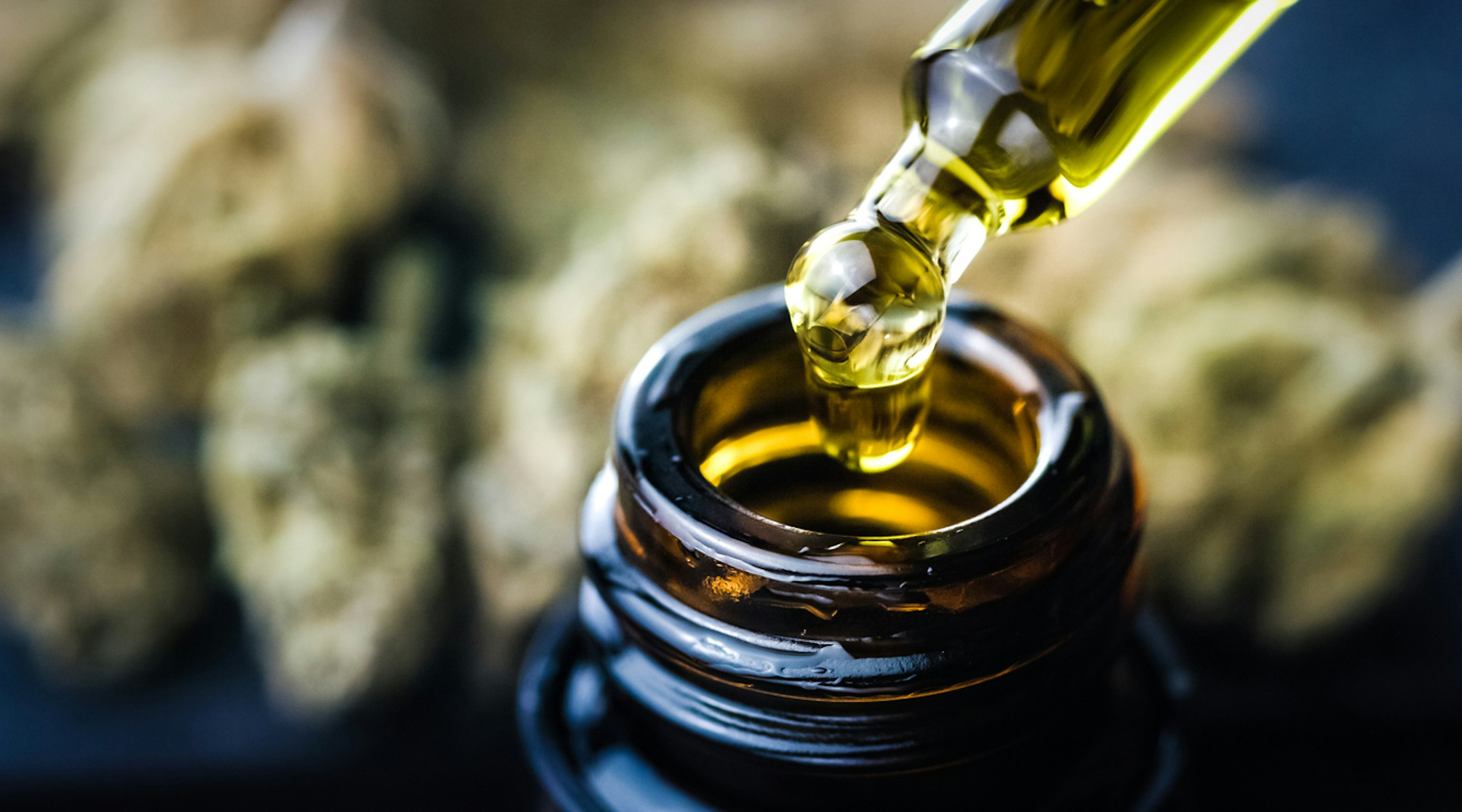Prescribed cannabis oil vs vaping medical cannabis flower
14 min read
Sarah Sinclair
If you’re able to obtain a prescription for medical cannabis in the UK, the chances are you’ll be prescribed it as an oil or as dried flower for vaping. But what’s the difference between these two delivery routes? How do they both work? And how do you know which one is right for you?
Contents
If you’re new to medical cannabis, you probably have a few questions. And one of those is almost definitely; ‘how do you take it?’
As always with medical cannabis, there is no one size fits all. There are many different factors which might influence which product you’re prescribed and which delivery route is most beneficial for managing your symptoms. Choosing the right one for you is a personal choice for you to explore with your doctor.
We take a deep dive into the two most common administration methods —flower and oil—to help you determine which delivery route might be right for you.
How is medical cannabis prescribed in the UK?
Oil and flower: the basics
In the UK, medical cannabis is most commonly prescribed as either an oil or tincture, which is administered orally, or as dried flower preparations which are inhaled using a vaporiser.
Both flower and oil can contain varying levels of cannabinoids, the most prominent being CBD and THC, as well as possibly some minor cannabinoids and terpenes (compounds responsible for its taste and smell). Some products have higher levels of CBD or THC, while others contain balanced amounts of each.
Specialist clinicians at clinics such as Releaf may prescribe either of these for you, if they feel it is appropriate. For patients who are cannabis ‘naive’, meaning they are completely new to medical cannabis and have no experience of self-medicating, doctors often start by prescribing an oil to see how they get on.
They are usually advised to start you on a low dosage while you work together to find the right delivery method and dose for you. At a later follow-up appointment, your doctor may decide to introduce some flower, if they feel that you would benefit from this for managing your symptoms.
Data suggests that flower is the most commonly-prescribed product among UK patients. In a recent survey by the Medical Cannabis Alliance, 78% of respondents said they were prescribed flower, followed by 57% who were prescribed oil.
During your appointment, you will have the opportunity to discuss each administration method with your doctor and share any personal preferences you have—for example, there is no obligation to try flower if you feel this would not be right for you.
Are there other ways to administer medical cannabis?
In short, yes. There are many different ways that medical cannabis can be administered and companies are consistently working on developing new products.
In the UK, it is possible you could be prescribed medical cannabis in the form of capsules, oil sprays, inhalers or vape cartridges depending on your clinic and pharmacy. Although these are limited in availability at the moment, these may be something you wish to explore, given their affinity with more conventional medicines.
In other countries where the medical cannabis sector is more established, there are a much wider range of products available. These include topicals, suppositories and transdermal patches. While these product formats are not available in the UK yet, it is hoped they will be in future as the market develops.
What is a medical-grade cannabis flower?
As flower is typically how cannabis is consumed for recreational use, the fact that it is also prescribed in this format can be confusing for those new to medical cannabis.
It’s important to understand the differences between cannabis flower which is legally prescribed and that which is unregulated and bought illegally.
While all cannabis can have medicinal benefits, as with any other medicine, medical-grade cannabis has undergone rigorous testing processes to ensure it is safe for human consumption.
In the UK, legally, all prescribed medical cannabis products must be manufactured under EU-GMP conditions. This ensures that the products meet specific quality benchmarks and are tested for contaminants, such as heavy metals, pesticides, bacteria, and other impurities.
Prescribed products also provide a level of assurance for patients and doctors, enabling them to know exactly what they are taking. Knowing the levels of CBD and THC in a product helps your doctor provide more personalised care and adapt your prescription to suit your needs when necessary.
Medical cannabis oil v CBD oil: what’s the difference?
There is still a common misconception that CBD oil, which can be bought (without a prescription) online and from a range of high-street retailers, is the same as what your doctor would prescribe.
While some people report CBD products as having potential benefits for their wellbeing, these are not pharmaceutical-grade products and there is very limited evidence to support their use for the treatment of long-term health conditions. As THC is a controlled substance, legally, CBD wellness products can only contain up to 0.2% THC.
Pharmaceutical-grade cannabis can only be accessed with a prescription from a specialist doctor through a prescribing clinic.
Your doctor may prescribe a high-CBD oil, but unlike the high-street products, this has undergone the necessary testing processes mentioned above and may also contain a much broader spectrum of minor cannabinoids and terpenes.
All of these may have their own medicinal benefits and make up what is known as the ‘entourage effect’—the theory that all of these compounds together are more effective than any one in isolation.
Medical cannabis oil vs medical cannabis flower: the key differences
How is medical cannabis oil administered?
Cannabis oil is usually administered orally, using a pipette to deliver droplets on the tongue.
When medical cannabis is taken in this way, it must pass through the digestive system and into the liver before being absorbed. As a result it can take up to two hours to feel the effects.
Sometimes oil can be taken sublingually, where it is applied under the tongue. The sublingual delivery method allows the compounds to be absorbed into the bloodstream through mucous membranes in the mouth, which bypass the digestive system. This can mean you would feel the effects sooner.
How is medical cannabis flower administered?
Dried cannabis flower is administered using a vaporiser. It is illegal to smoke medical cannabis, even if the cannabis has been legally prescribed by a doctor.
The flower usually needs to be ground into fine pieces using a grinder and added to a section of the vaporiser which is known as the chamber.
The flower is heated to a certain temperature (usually below 200 C) so that it decarboxylates the raw acid forms of cannabinoids (THCA and CBDA) and converts them into the active cannabinoids, commonly known as CBD and THC, which are then inhaled through vapour.
When cannabis is administered in this way it is absorbed into the bloodstream straight from the lungs, leading to a quicker onset of effects.
Is there a price difference between cannabis oil and flower?
The prices of medical cannabis products vary between clinics and pharmacies, however oil is generally more expensive than flower.
This is due to a wide range of factors, such as additional production costs during the manufacturing process, specialist packaging and transportation—oils may need to be delivered in a temperature-controlled environment to maintain stability—and less demand and/or limited availability.
However, you should also consider additional costs that come with vaping. For example, you will need to purchase a suitable device to administer your medication with. There are now many different vaping devices available, from handheld vapes to larger table top equipment, such as the Volcano, which all come at a wide range of price points.
Can I vape medical cannabis oil?
Just to confuse things even further, medical cannabis oil or extract can also be administered by some vape cartridge devices, although currently these are not as commonly prescribed in the UK.
Rather than flower, these products contain a cannabis oil or concentrate and work by heating the coil which is connected to a battery. This then turns the liquid into a vapour which can be inhaled into the lungs.
It should, however, be noted that the Omura device, available in the Releaf+ welcome box, can only be used with flower, not oil.
Is vaping medical cannabis better than oil (or vice-versa)?
Medical cannabis oil: the pros
Many patients prefer to administer medical cannabis orally for a number of reasons.
Not only is it thought to be one of the safest ways to administer medical cannabis, but it is also easy to do and can be more discrete. Patients may feel more comfortable using an oil if they have to administer their medication when in public places or at work.
Similarly, some doctors feel more comfortable prescribing oils as it is more in line with the delivery methods of traditional medications and supplements.
The effects of the compounds in cannabis, such as THC, also last longer when taken orally compared to vaping. Generally, you should feel the effects for between six to 10 hours after taking the oil.
While the exposure time is longer, the effects are usually less intense than when THC is vaped and you may be less likely to experience unwanted side effects such as nausea and dizziness.
Medical cannabis oil: the cons
Depending on your symptoms and reason for being prescribed cannabis, some patients find the length of time it takes to experience the effects from an oil to be a downside for them.
If you experience chronic pain or anxiety, for example, and feel you need instant relief from your symptoms due a sudden pain flare up or anxiety attack, oil might not be the right choice for you.
During the digestive process, the oil also goes through what is known as the first-pass metabolism effect, whereby some of the cannabinoids are absorbed by the liver on the way through.
As a result, oral cannabis products are generally thought to have relatively poor bioavailability. This means you may need to take more oil to feel the same effects as you would from a smaller amount of flower.
Medical cannabis flower: the pros
One of the main reasons why some patients prefer flower over oil is the fast-acting effects of this delivery method (usually within six to 10 minutes), which they find to be more beneficial for the management of certain symptoms.
The effects of vaping also tend to be more potent than that of orally administered products, but last for a shorter amount of time (around one to four hours). This is something to consider depending on your personal circumstances.
For patients who have more experience of medicating with cannabis, vaping is sometimes preferred as it can offer more potent effects and often delivers a more intense flavour profile due to the presence of terpenes.
Medical cannabis flower: the cons
If you’re looking for a product with longer-lasting effects that you don’t need to return to regularly throughout the day, vaping might not be the one for you. Equally, as the effects can be more potent, you may be more likely to experience unwanted side effects of THC, which can include:
- Anxiety/paranoia
- Dizziness
- Drowsiness/fatigue
- Dry mouth
- Increased appetite
- Nausea
For those who are new to medical cannabis, vaping can take a bit of getting used to. There is quite a bit of equipment required and you’ll need to learn how to set up and clean your vaporiser effectively. Releaf’s clinical team can provide some guidance and resources to help you with this.
And there’s no two ways about it; vaping medical cannabis flower often leaves a distinct smell in the air, which can be problematic for some patients who need to medicate in public.
Due to the smell and its existing association with recreational use, there is still a lot of stigma around cannabis flower in society. If you are carrying your prescription, there's always a risk you could run into issues with police or other authorities, who do not have the most up to date information around medical cannabis and its legal status.
While it is hoped you don’t find yourself in this situation, Releaf offers every patient at the clinic a Medical Cannabis Card to help you quickly and easily validate your prescription should you need to.
Is vaping medical cannabis flower safe?
While there is still much we don’t know about the long-term effects of vaping flower, experts widely agree that this delivery method is much safer than smoking, as it greatly reduces the amount of the toxic compounds produced by combusting cannabis.
You also have the additional reassurance of knowing your prescribed cannabis has been produced to EU-GMP standards and tested for contaminants.
Does vaping cannabis smell less?
Yes, while vaping does produce a noticeable odour, it is much less pungent and lingering compared to traditional smoking methods. This is because vaping heats the cannabis at a lower temperature, and does not cause any combustion or smoke.
How do I know which is right for me?
There is a lot to consider when it comes to choosing the right medical cannabis product for you and your clinician will discuss all the options with you during your initial consultation.
During your appointment, your doctor may recommend a certain product based on your medical condition and symptoms, or sometimes they will prescribe a combination of both.
At the same time, your personal preferences, lifestyle and financial situation are all crucial considerations. When, where and how often you are going to be administering your medication will all likely influence your decision in some way.
But importantly, if your situation changes or a particular administration method isn’t right for you and you want to try something else, you can always discuss this with your doctor at your next follow-up appointment.
How can I get a prescription for medical cannabis oil or flower?
If after reading this, you would like to find out more about medical cannabis oil and/or flower, you can use Releaf's free online eligibility checker to determine whether the treatment is right for you.
A team of expert clinicians will review your application and if appropriate you will be invited to schedule an appointment with a specialist consultant.
If your consultant decides medical cannabis may be beneficial for your symptoms or health condition, you will have the opportunity to discuss different administration methods and share your personal preferences to help them prescribe the right product for you.
Share article
Did you like this article?
It is important to seek medical advice before starting any new treatments. The patient advisors at Releaf are available to provide expert advice and support. Alternatively, click here to book a consultation with one of our specialist doctors.
Elevate your wellness with medical cannabis
Get comprehensive care, convenience, and confidence with an all-in-one treatment plan.
Am I eligible?Authors
Sarah, a distinguished journalist with over a decade in publishing and communications, now excels in cannabis health and policy journalism in the UK, advocating for informed health decisions through her award-winning work.
compliance checked
Compliance Director
Editorial Policy
All of our articles are written by medical cannabis experts, guided by strict sourcing guidelines, and reference peer-reviewed studies and credible academic research. Our expert clinical team and compliance specialists provide valuable insights to ensure accuracy when required. Learn more in our editorial policy.
Need more help?











